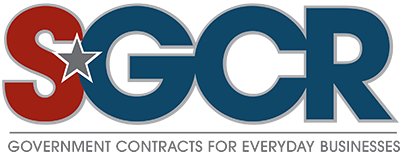The Future of Federal Contracting: What Small Businesses Need to Know About GSA’s Centralized Acquisition Services
The landscape of government contracting is evolving, and it’s crucial for small and medium-sized businesses (SMBs) like yours to stay informed about these changes. Recently, the Department of Housing and Urban Development (HUD) became the third agency to shift its purchasing for common goods and services to the General Services Administration (GSA). This transition is part of a broader initiative to consolidate and streamline federal procurement processes, designed to benefit not only government agencies but also the small businesses that supply them.
What Does This Mean for You?
For SMBs interested in government contracts, understanding the implications of this consolidation is key. The GSA’s Office of Centralized Acquisition Services (OCAS) aims to leverage multiple award schedules and government-wide acquisition contracts (GWACs) to create a more efficient procurement structure. This means that the government is looking to reduce duplication in contracts and drive efficiencies in spending.
Tom Meiron, the assistant commissioner for OCAS, explained that the goal is to allow agencies to concentrate on their mission-specific needs while centralizing the procurement of common goods and services.
Why Should SMBs Care?
1. Increased Efficiency: The initial pilots with agencies like the Office of Personnel Management (OPM) and the Small Business Administration (SBA) are already showing promise, with GSA reporting a 37% improvement in efficiency compared to previous methods. For SMBs, this means a greater chance of being included in streamlined purchasing processes.
2. Cost Savings: With the GSA managing over $1.5 billion in contracts and achieving significant savings, there’s potential for SMBs to benefit from a more competitive bidding environment. According to GSA, they achieved $6.5 million in savings just by optimizing software licenses and eliminating unnecessary services.
3. Access to More Opportunities: As the GSA transitions contracts to OCAS, there’s a greater emphasis on using best-in-class contracts. This opens the door for more SMBs to participate, especially those who qualify as Veteran-Owned Small Businesses (VOSB), Service-Disabled Veteran-Owned Small Businesses (SDVOSB), or those in HUBZone areas.
How Can You Get Involved?
If you’re an SMB interested in government contracts but haven’t registered for the System for Award Management (SAM) or the GSA, it’s time to take action.
Here are some steps you can follow:
- Register on SAM: This is the first step to doing business with the federal government. The registration process may seem daunting, but it’s essential for eligibility in government contracts.
- Understand GSA Schedules: Familiarize yourself with the GSA Schedules, which are contracts that allow federal agencies to buy goods and services efficiently. Being knowledgeable about these can give you an advantage when bidding.
- Leverage Resources: Utilize resources available to you. At Select GCR, we provide a wealth of information to help SMBs navigate government contracting. Check out our insightful articles on government contracting basics, how to register on SAM, and tips for winning government contracts.
- Consider Your Status: If you qualify as a VOSB, SDVOSB, or HUBZone business, there are programs designed to support you. We help businesses like yours understand these programs and the benefits they can offer. Learn more about these opportunities on our Veteran-owned Business Support page.
The Role of OCAS in Government Procurement
The OCAS was established to provide a more unified approach to procurement, responding to an executive order aimed at consolidating purchasing across the federal government. This not only aims to save taxpayer dollars but also enhances the operational efficiency of federal agencies.
As part of this initiative, GSA is working to ensure that a higher percentage of common spending routes through their centralized services. Currently, less than 20% of common spending is handled by GSA, despite their successes. The goal is to significantly increase that number, which would translate into more opportunities for SMBs.
Bottle line, all government agencies are moving to GSA and SAM acquisition databases so get on those systems now or you’re invisible to government contracting. Schedule a call now to get set up.
Conclusion: Take Action Now
The transition to a centralized acquisition process is a game-changer for SMBs interested in government contracting. With increased efficiency, potential cost savings, and more opportunities on the horizon, now is the time to position your business for success in this evolving landscape. Register for SAM, familiarize yourself with GSA schedules, and explore the resources available at Select GCR to help you navigate this new terrain.
Remember, you’re not alone in this journey. We’re here to assist you in understanding government programs and finding ways to leverage your business’s unique strengths. If you’re ready to get started, check out our Government Contracting Resources for more information on the steps you can take today.
Sources:
- Federal News Network. (2025). HUD joining GSA centralized acquisition services pilot.
- GSA Office of Management and Budget. (2025). Memo on procurement consolidation plan.



